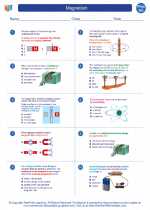Abiotic
Abiotic factors are non-living components of an ecosystem. These factors can include physical and chemical elements such as temperature, water, sunlight, soil, and nutrients. Abiotic factors play a crucial role in shaping the environment of an ecosystem and influencing the organisms that inhabit it.
Study Guide for Abiotic Factors
Definition and Examples
- Definition: Abiotic factors are non-living components that impact the environment and living organisms within an ecosystem.
- Examples of abiotic factors include:
- Temperature
- Water availability
- Light intensity
- Soil composition
- Wind speed
- Humidity
- pH level
- Salinity
Impact on Ecosystems
Abiotic factors can have a significant impact on the structure and function of ecosystems. For example, temperature and precipitation levels can determine the types of plants and animals that can survive in a particular area. Soil composition and pH levels can affect the types of crops that can be grown in agricultural systems.
Interactions with Biotic Factors
Abiotic factors also interact with biotic factors (living organisms) within an ecosystem. For example, the availability of water and sunlight can affect plant growth, which in turn influences the types of herbivores that feed on those plants. Understanding these interactions is important for studying the dynamics of ecosystems.
Human Impact
Human activities can significantly alter abiotic factors in ecosystems. Pollution, deforestation, and climate change can all disrupt the balance of abiotic factors, leading to consequences for the organisms that depend on those factors for survival.
Study Tips
- Understand the role of each abiotic factor in shaping the environment.
- Learn about the interactions between abiotic and biotic factors.
- Explore case studies or real-world examples of how human activities have affected abiotic factors in different ecosystems.
- Practice identifying and analyzing abiotic factors in various ecosystems.
By mastering the concepts of abiotic factors, you'll gain a deeper understanding of how the non-living components of ecosystems contribute to their overall dynamics and health.



